The pier was small but scenic with a few bobbing boats in the water. Along Stranden street, there were upmarket shopping malls and a few restaurants nearby. Unfortunately, as it was getting late and drizzling the area looked quiet and lifeless. After cruising past several restaurants in search of seafood, we settled for a cozy looking pub on Stranden itself. We were keen to try some of their Norwegian seafood but were surprised that although the dishes sounded interesting, there weren't many seafood choices on the menu! Ultimately, we ordered two different types of seafood pastas, fish soup, and their Norwegian beer.
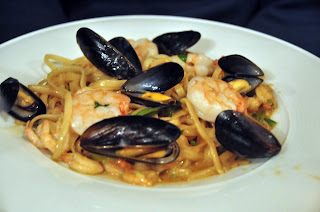
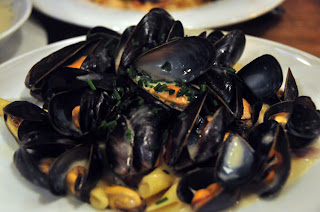
Seafood pasta with lots of mussels!
The dinner was fairly good and on hind sight turned out to be the best food we have tasted throughout our trip in Oslo. We have been warned that traveling in Scandinavian countries was going to be an expensive exercise and they were right! For an entree, two mains and a couple of beers, the price turned out to be £60! For that price in London, we could find a 3 set lunch menu for two at a Michelin star restaurant. This experience set the tone for our meals the next few days, as we weren't prepared to pay an exorbitant price for mediocre meals. We ate simply as we preferred to spend our money in museums and other activities.
Me and Andy love our coffees and we wanted to see whether they made their coffees as well as they say. We walked into a little cafe and had a fantastic cuppa!
Big bowls of caffeine!
The wooden houses, farmsteads and work houses are amazingly sturdy structures which bear intricate carvings on their windows frames, pillars and doors. Many reminded me of the hobbit homes in the Lord of the Rings movie. They seem to be built as one with the environment and are made with materials found in nature.
We explored further and discovered this little hut where two girls were baking traditional "lefse", a flatbread that was a staple for the Norsk people. It was baked fresh over a hot stove and served with some butter. It was a perfect little snack while exploring the out-door museum.
We also visited the amazingly, beautiful Norsk church called the Stave Church (Gol Stavkirke) sitting majestically on a hill. The whole church is carved out of wood and bear intricate carvings of animals and plant motifs. This Stave church was built around 1200 and is one of the 28 remaining stave churches in Norway. The term "stave church" refers to the staves or posts that support the roof. Throughout the centuries, the church has undergone several renovations and alterations.
After the Norsk Folkemusuem, we visited The Viking Ship Museum located a short walk away. There, we saw three of the most well preserved Viking ships. We were impressed at how the whole museum is thoughtfully built around these ships and how remarkably well preserved they were. It was interesting to learn that these ships were found in royal burial mounds in the Oslo fjord. They were burial ships that carried the dead over to "the Other World" and were laden with unique treasures such as wagons, horses and textiles - all now preserved in this museum.
The Viking Museum was fairly small and so we were able to explore it quite quickly, leaving us enough time to venture back into the city to visit the another renown tourist site, the Vigeland Sculpture Park. As we explored Oslo city, we discovered how short the distances were from one location to another and how easy it was to travel via public transport. We were able walk from the Norsk Folkemuseum to the Viking Museum in less than 10 minutes and from there, we took a 15 minute bus ride back into the city where the Vigeland Sculpture park was located.
The Vigeland Park is a beautiful public park located in Frogner. It's the largest park in the city and features 212 bronze and granite sculptures created by Gustav Vigeland.
The highest point in the park lies the most popular attraction. A monolith. The sculpture is an amazing composition of human anatomies, embracing one another as they soar towards the sky.
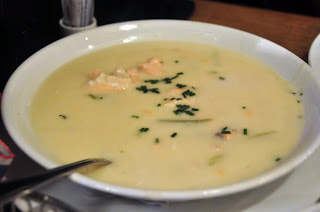
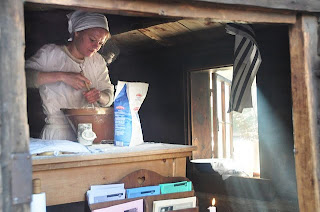
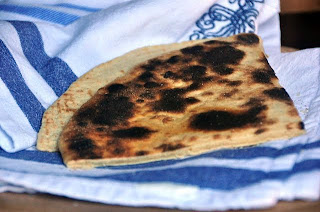
No comments:
Post a Comment